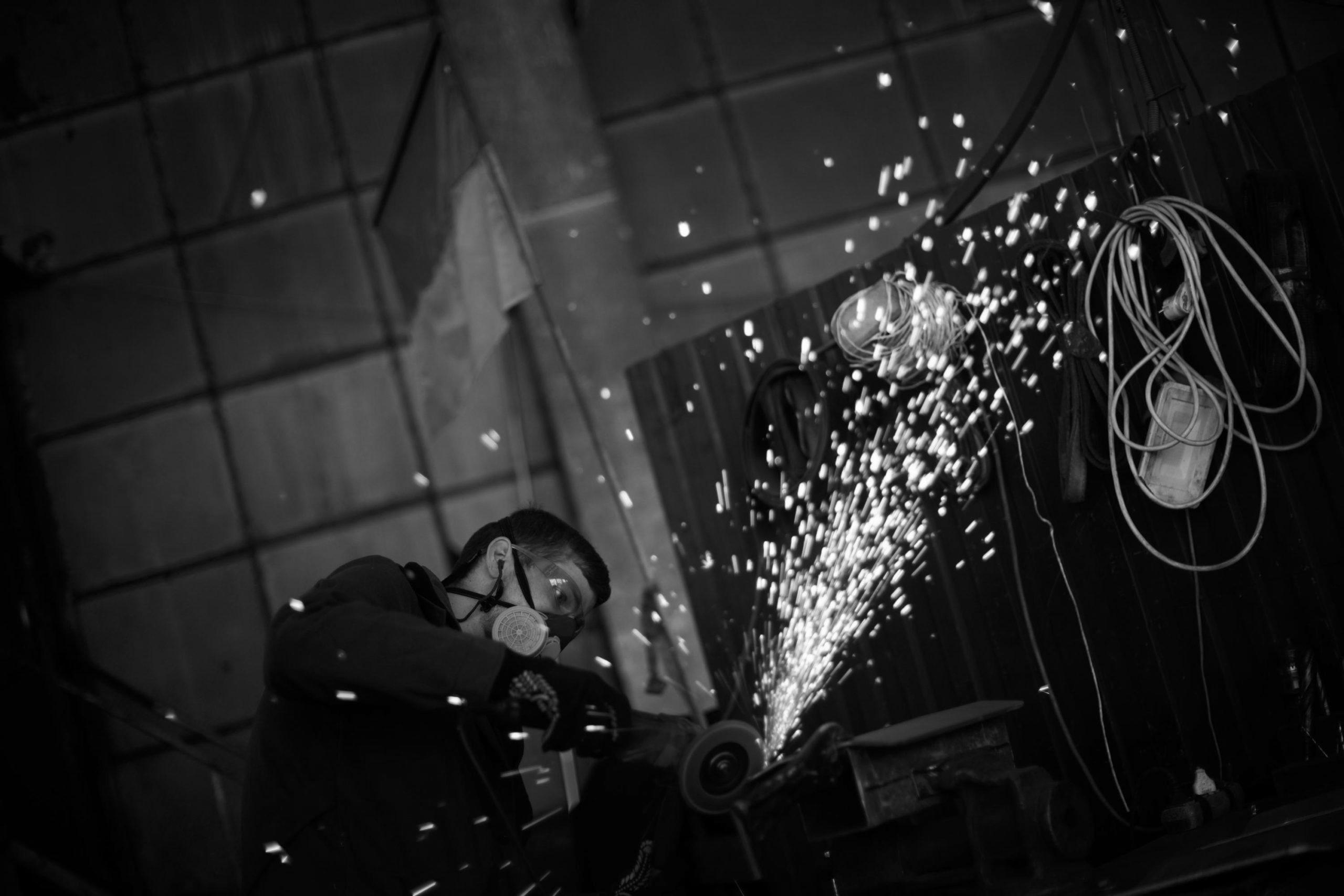Protect the physique: Ukraine volunteers craft armor, camouflage
Warning: Undefined variable $post_id in /home/webpages/lima-city/booktips/wordpress_de-2022-03-17-33f52d/wp-content/themes/fast-press/single.php on line 26

2022-05-09 09:16:18
#Protect #physique #Ukraine #volunteers #craft #armor #camouflage
ZAPORIZHZHIA, Ukraine (AP) — Sparks fly as a round saw slices into metal, whereas welders close by work feverishly to the sound of blaring heavy metal. Upstairs, stitching machines clatter as ladies mark patterns on fabric being formed into bulletproof vests.
An outdated industrial complex in the southeastern Ukrainian riverside city of Zaporizhzhia has turn into a hive of activity for volunteers producing all the pieces from body armor and anti-tank obstacles to camouflage nets, transportable heating stoves and rifle slings for Ukrainian soldiers fighting Russia’s invasion. One section makes a speciality of automobiles, armor-plating some, changing others into ambulances. Another organizes meals and medical deliveries.
With the entrance line about 50 kilometers (30 miles) from the town, some sections of the operation, such because the stitching of bulletproof vests, are working around the clock in shifts to fulfill demand. Crowdfunding has brought in sufficient cash to buy steel from Sweden, Finland and Belgium, which is lighter than local steel, organizers say, a crucial quality for physique armor.
The operation is the brainchild of native celebrity Vasyl Busharov and his friend Hennadii Vovchenko, who ran a furniture-making enterprise. They named it Palianytsia, a kind of Ukrainian bread whose name many Ukrainians say cannot be pronounced properly by Russians.
The operation depends totally on volunteers, who now quantity greater than 400 and come from all walks of life, from tailors to craftsmen to legal professionals. Other than those involved in manufacturing, there are also drivers delivering humanitarian support and medical tools bought through donated funds.
“I really feel I'm wanted here,” said clothier Olena Grekova, 52, taking a brief break from marking cloth for vests.
When Russia invaded on Feb. 24, she was in Thailand in search of inspiration for her spring assortment. Initially, she said, she puzzled whether it was a sign from God that she shouldn’t return. Her husband and two grownup sons urged her to not.
“However I made a decision that I had to return,” she stated.
She had identified Busharov for years. Arriving dwelling on March 3, she gathered her gear the next day and by March 5 was at Palianytsia. She’s been working there every single day since, bar one, generally even at night time.
Shifting from designing backless ballgowns to creating purposeful bulletproof vests was “a new expertise for me,” Grekova said. But she sought suggestions from troopers for her designs, which have armor plates added. Now she helps to produce a number of variations, together with a prototype summer time vest.
In another part of the commercial advanced, 55-year-old Ihor Prytula was busy making a new camouflage web, winding pieces of dyed fabric through a string frame. A furniture-maker by commerce, he joined Palianytsia at first of the conflict. He had some army expertise, he mentioned, so it was straightforward to get feedback from troopers on what they wanted.
“We speak the identical language,” he mentioned.
For Prytula, the conflict is private. His 27-year-old son was killed in late March as he helped evacuate people from the northern town of Chernihiv.
“The war and dying, it’s bad, belief me, I do know this,” he said. “It’s bad, it’s tears, it’s sorrow.”
The decision for volunteers went out as quickly as the conflict began. Busharov announced his challenge on Fb on Feb. 25. The following day, 50 people turned up. “Subsequent day 150 individuals, subsequent day 300 individuals. ... And all together, we attempt (to) shield our metropolis.”
They began out making Molovov cocktails in case Russian soldiers advanced on Zaporizhzhia. In 10 days, they produced 14,000, he mentioned. Then they turned to producing anti-tank obstacles often called hedgehogs — three massive metal beams soldered collectively at angles — used as part of town’s defenses. Quickly, Busharov and Vovchenko mentioned, they discovered one other urgent need: there weren’t enough bulletproof vests for Ukraine’s troopers.
But learning how to make one thing so specialized wasn’t simple.
“I wasn’t really connected with the military in any respect,” mentioned Vovchenko. “It took two days and three sleepless nights to grasp what must be executed.”
The team went by varied kinds of metal, making plates and testing them to check bullet penetration. Some didn’t provide sufficient protection, others had been too heavy to be useful. Then they'd a breakthrough.
“It seems that steel used for automotive suspension has excellent properties for bullet penetration,” Vovchenko mentioned, standing in front of 4 shelves of take a look at plates with various degrees of bullet damage. The one made from automobile suspension metal showed dozens of bullet marks however none that penetrated.
The vests and everything else made at Palianytsia are offered free to soldiers who request them, so long as they can prove they are within the army. Every plate is numbered and each vest has a label noting it's not for sale.
To this point, Palianytsia has produced 1,800 bulletproof vests in two months, Busharov said, adding there was a waiting checklist of round 2,000 more from throughout Ukraine.
Vovchenko said they've heard about as much as 300 people whose lives have been saved by the vests.
Understanding that's “incredibly inspiring and it retains us going,” he stated.
____
Inna Varenytsia in Zaporizhzhia, Ukraine, contributed.
___
Observe all AP stories on the struggle in Ukraine at https://apnews.com/hub/russia-ukraine
Quelle: apnews.com